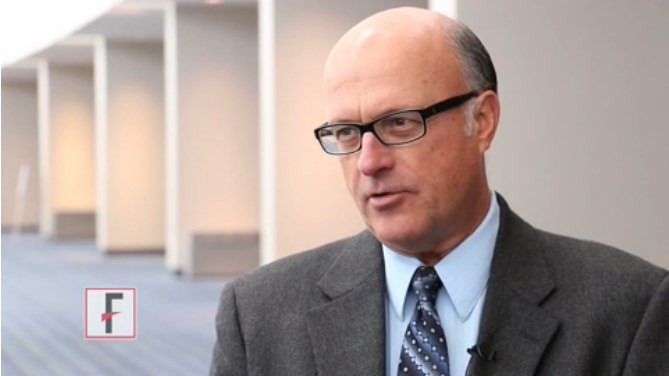User login
WASHINGTON – Youth football coaches and officials should adopt a “zero tolerance” policy regarding dangerous, illegal head-first tackling, according to a policy statement from the American Academy of Pediatrics.
Dr. Gregory L. Landry, a pediatrician at the University of Wisconsin, Madison, presented the policy statement in a plenary session at the AAP annual meeting.
“In looking at the data, we could not find a case for banning tackling in youth football. The injury rate in youth football is relatively low, compared to the older boys and girls,” Dr. Landry, who coauthored the statement, said in a video interview. “We were a little bit worried that if we banned tackling at the youth level it would increase the injury rate when older kids learn how to tackle when they are bigger and more powerful.”
The policy also calls for the following:
• Players must decide whether the benefits of playing outweigh the risks of possible injury.
• Nontackling leagues should be expanded so athletes can choose to participate without the injury risks associated with tackling.
• Skilled athletic trainers should be available on the sidelines, as evidence shows they can reduce the number of injuries for players.
See the video interview with Dr. Landry below.
The video associated with this article is no longer available on this site. Please view all of our videos on the MDedge YouTube channel
On Twitter @denisefulton
WASHINGTON – Youth football coaches and officials should adopt a “zero tolerance” policy regarding dangerous, illegal head-first tackling, according to a policy statement from the American Academy of Pediatrics.
Dr. Gregory L. Landry, a pediatrician at the University of Wisconsin, Madison, presented the policy statement in a plenary session at the AAP annual meeting.
“In looking at the data, we could not find a case for banning tackling in youth football. The injury rate in youth football is relatively low, compared to the older boys and girls,” Dr. Landry, who coauthored the statement, said in a video interview. “We were a little bit worried that if we banned tackling at the youth level it would increase the injury rate when older kids learn how to tackle when they are bigger and more powerful.”
The policy also calls for the following:
• Players must decide whether the benefits of playing outweigh the risks of possible injury.
• Nontackling leagues should be expanded so athletes can choose to participate without the injury risks associated with tackling.
• Skilled athletic trainers should be available on the sidelines, as evidence shows they can reduce the number of injuries for players.
See the video interview with Dr. Landry below.
The video associated with this article is no longer available on this site. Please view all of our videos on the MDedge YouTube channel
On Twitter @denisefulton
WASHINGTON – Youth football coaches and officials should adopt a “zero tolerance” policy regarding dangerous, illegal head-first tackling, according to a policy statement from the American Academy of Pediatrics.
Dr. Gregory L. Landry, a pediatrician at the University of Wisconsin, Madison, presented the policy statement in a plenary session at the AAP annual meeting.
“In looking at the data, we could not find a case for banning tackling in youth football. The injury rate in youth football is relatively low, compared to the older boys and girls,” Dr. Landry, who coauthored the statement, said in a video interview. “We were a little bit worried that if we banned tackling at the youth level it would increase the injury rate when older kids learn how to tackle when they are bigger and more powerful.”
The policy also calls for the following:
• Players must decide whether the benefits of playing outweigh the risks of possible injury.
• Nontackling leagues should be expanded so athletes can choose to participate without the injury risks associated with tackling.
• Skilled athletic trainers should be available on the sidelines, as evidence shows they can reduce the number of injuries for players.
See the video interview with Dr. Landry below.
The video associated with this article is no longer available on this site. Please view all of our videos on the MDedge YouTube channel
On Twitter @denisefulton
AT THE AAP NATIONAL CONFERENCE
